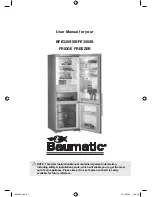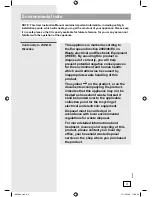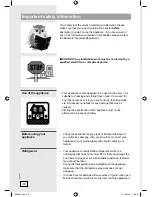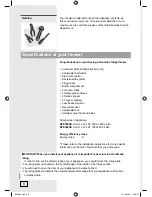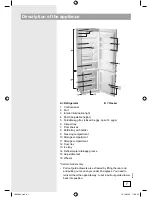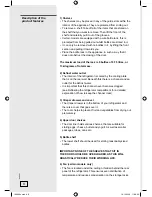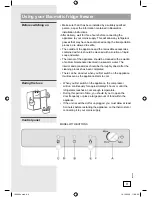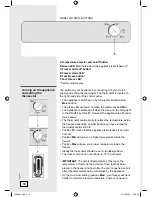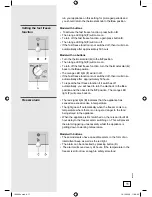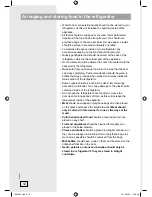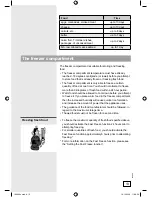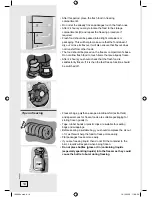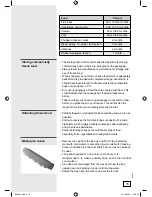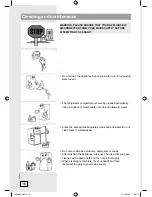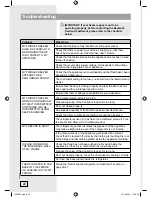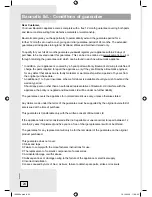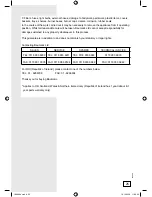
169890
Food
Period
Fruit, beef
from 10 to12 months
Vegetables, veal, poultry
from 8 to 10 months
Venison
from 6 to 8 months
Pork
from 4 to 6 months
Chopped (minced ) meat
4 months
Bread, pastry, TV-dinner, fat free
fi
sh
3 months
Intestines 2
months
Smoked sausages, fat
fi
sh
1 month
• The storage time and recommended temperature for storing
commercially frozen foods, are indicated on the packaging.
• Always follow the manufacturer’s instructions for storage and
use of frozen food.
• When shopping, be careful to choose food which is adequately
packed and is provided with complete storage instructions. It
should have been stored in a freezer where the temperature
does not rise above -18°C.
• Do not buy packages of food that are covered with frost. This
could indicate that the package has thawed at least once
before.
• Take care that your frozen food packages do not start to thaw
before you place them in your freezer. This will shorten the
length of time that you can safely store the food for.
• Partially thawed or defrosted foods should be used as soon as
possible.
• Cold air preserves the food but it does not destroy the micro
organisms which rapidly activate themselves after defrosting
and make foods perishable.
• Partial defrosting reduces the nutritional value of food,
especially fruits, vegetables and readymade meals.
• Remove the cap from the ice tray and
fi
ll it to the indicating
mark with cold water or some other liquid, suitable for freezing.
• Close it and place it in the door shelf. The ice tray can produce
8 cubes.
• The period required for ice to form is 2-6 hours. It is
recommended to make a quantity of ice, prior to the time that
you require it.
• Ice cubes are discharged from the tray by turning the tray
upside down and placing it under cold running water.
• Shake the tray, open the cover and pour the ice out.
15
Storing commercially
frozen food
Defrosting frozen food
Making ice cubes
169890en.indd 15
169890en.indd 15
16.10.2006 11:36:27
16.10.2006 11:36:27

